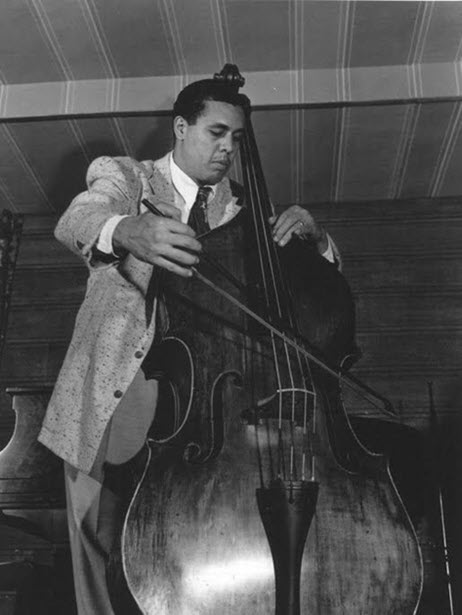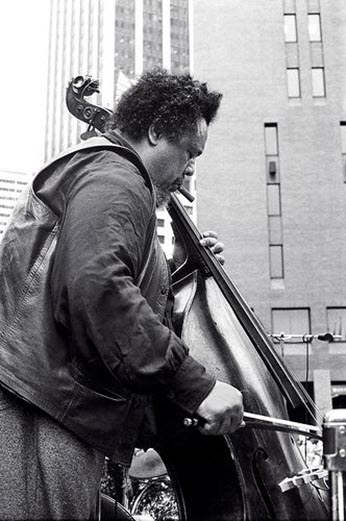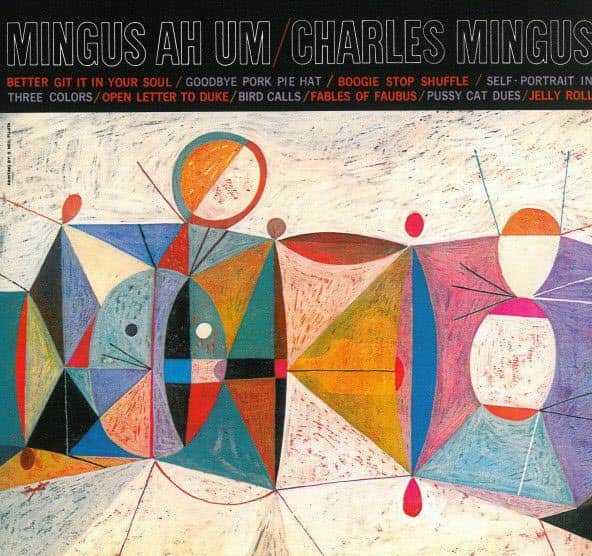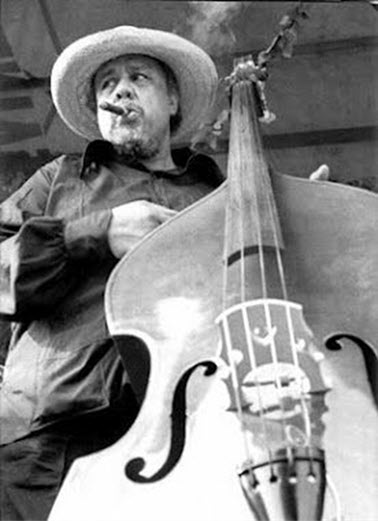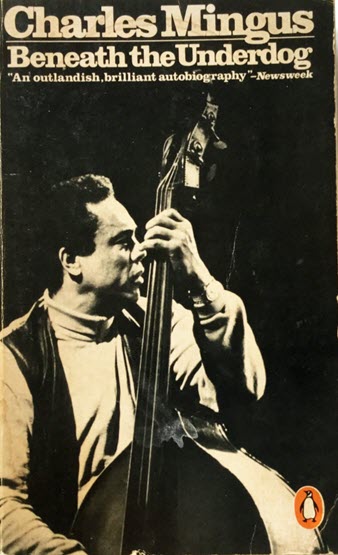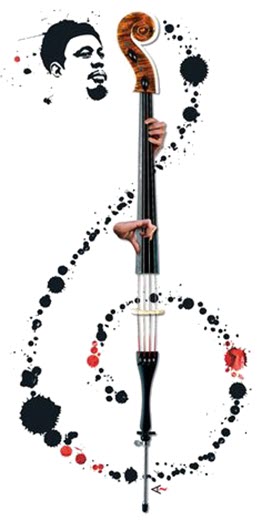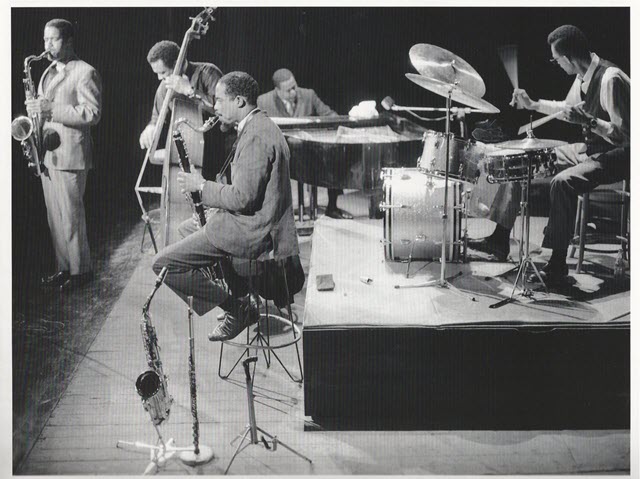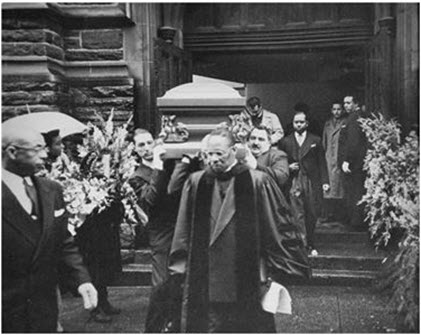Charles Mingus was widely recognized as a significant character, one of the most influential musicians of the 20th century, and, above all, a brilliant bassist. He released several critically acclaimed recordings.
He was well-known for his musical style and compositions. Mingus’ often terrifying temperament, which gave him the nickname “The Angry Man of Jazz,” was nearly as well-known as his ambitious music.
He is regarded most outstanding jazz performer and composer of all time and a key proponent of collaborative improvisation.
During his three-decade career, he has worked with jazz musicians such as Louis Armstrong, Duke Ellington, Charlie Parker, Dizzy Gillespie, and Herbie Hancock.
Upon establishing himself as a musician, he found his publishing and recording firms to promote his vast repertoire of works.
He was unique for his unusual style of composing and playing.
Mingus had a different approach to music, experimenting in Jazz, hard bop, bebop, avant-garde Jazz, post-bop, Third Stream, orchestral Jazz, free Jazz.
He led the group Mingus Big Band and The Quintet.
He was from Nogales, Arizona, United States
10. Early Life and Career
Mingus was born in Nogales, Arizona, but grew up primarily in Los Angeles’ Watts neighborhood. Early exposure to African American religious music had a significant effect on Mingus. “All the music I heard as a very young child was church music,” Mingus recalls in Nat Hentoff’s book Jazz Is.
For five years, he studied double bass and composition with H. Rheinshagen and compositional techniques with the legendary Lloyd Reese.
During his early professional career in the 1940s, he toured with groups including Louis Armstrong Kid Ory. Mingus wrote and played with the Lionel Hampton big band from 1947 to 1948, after engagements with Louis Armstrong and Kid Ory in the early 1940s.
Hampton performed and recorded some of Mingus’s compositions. In 1950 and 1951, a famous trio of Mingus, Red Norvo, and Tal Farlow earned critical praise. Mingus was briefly hired by his idol Duke Ellington but was dismissed due to an outburst of anger.
He eventually settled in New York, where he performed and recorded with some of the most influential performers of the 1950s, including Miles Davis, Charlie Parker, Art Tatum, Count Basie, Bud Powell, Billie Holiday, and Duke Ellington. One of the few bassists who has done so swiftly established himself as a musical leader.
9. Charles was known for multiple distinguishing features and styles
Besides being a virtuoso bassist, Charles Mingus was also an accomplished pianist, bandleader, and composer who was one of the most influential artists in twentieth-century American music. Mingus was a creative and imaginative genius; he was always more effective as a soloist than an accompaniment or sideman.
His songs maintained hard bop’s passionate and robust feel, incorporating black gospel music and blues elements, Third Stream, free jazz, and classical music. Songs such as “Goodbye Pork Pie Hat” and “Fables of Faubus” evoke vivid images in the listeners’ minds.
When creating his jazz suites, Mingus drew to classical composition ideas on Records such as Pithecanthropus Erectus and The Black Saint and the Sinner Lady can be heard.
Mingus was influenced by Duke Ellington, Charlie Parker, Thelonious Monk, African American gospel music, and Mexican folk music, in addition to traditional Jazz and 20th-century concert music.
Mingus is generally seen as the successor to Duke Ellington. He admired and collaborated on the album Money Jungle due to his outstanding composing for midsize ensembles and his catering to and stressing the performers’ abilities in his groups.
8. Charles Mingus impressed people with his Notable Works
Charles Mingus wrote and produced several of Jazz’s most impressive records.
The Clown by Charles Mingus was released in September 1957. It is the sequel to 1956’s Pithecanthropus Erectus and incorporates Jean Shepherd’s improvised narrative. Rhino released a deluxe edition of The Clown in 2000, including two bonus tracks.
Mingus Ah Um was released in October 1959 from Colombia Record, and it was his first album produced for the label.
Several of Mingus’ best-known songs are included in this release, including “Better Git It in Your Soul,” “Goodbye Pork Pie Hat,” and “Fables of Faubus.” In 2013, the album was inducted into the Grammy Hall of Fame.
In July, the Black Saint and the Sinner Lady was recorded and released by Impulse Records on January 20, 1963. The composition comprises four tracks and six movements from a single continuous piece partially composed as a ballet.
This composition, which takes the shape of dance, is often regarded as the pinnacle of Mingus’ recording career. It is well-known for its orchestrations and the usage of overdubbing, which is uncommon in jazz music.
7. Charles was nicknamed – The Angry Man of Jazz
Mingus’ turbulent, volatile nature pushed the boundaries. He was emotive, politically vocal, and full of attitude—so unrepentant about being himself that he didn’t care if he offended individuals within and outside of the jazz scene.
Mingus’s often frightening attitude, which gave him “The Angry Man of Jazz,” was nearly as well-known as his ambitious work. Mingus was admired for his musical abilities, but for his occasionally violent onstage temper, he was also feared, which was directed at members of his band at times and the crowd at others.
Mingus punched Jimmy Knepper in the mouth on October 12, 1962, while the two were working together at Mingus’ apartment on a score for his upcoming concert at The Town Hall in New York.
Mingus’ punch shattered a crowned tooth and its underlying stub, ruining his embouchure. Because of the attack, Knepper could not perform at the concert. Mingus appeared in court in January 1963 and was given a suspended sentence.
6. Autobiography “Beneath the Underdog”
For moreover two decades, Mingus worked on his autobiography. Memoirs of a Half Yellow Schitt Covered Nigger was the first planned title. The printed version, edited by Nel King, decreased the original manuscript by more than two-thirds.
Sue Mingus, Mingus’ last wife, stated that the book depicted “the superficial Mingus, not the genuine one,” and described him as “a very tormented, often resentful man who never feels loved enough but continuously destroys the loves offered to him.”
In the autobiography, Mingus claimed to have had more than 31 affairs, including 26 prostitutes in one sitting, and to have been married to two different women at the same time.
5. Awards and Achievements
Mingus received a Guggenheim Fellowship and was inducted into the Down Beat Jazz Hall of Fame in 1971.
New York Public Library presented Mingus’ works in 1988. These works’ microfilms were handed to the library’s Music Division, where they are now available for study.
The United States Postal Service created a stamp in his honor in 1995. Mingus Dynasty (1959) album was inducted into the Grammy Hall of Fame in 1999.
In 2005, Nesuhi Ertegun Jazz Hall of Fame was honored at Jazz at Lincoln Center.
4. Andrew Homzy uncovered Mingus’ masterpiece.
Charles Mingus composed Epitaph. Andrew Homzy rediscovered Mingus’s score Epitaph after his death.
In 1989, a 30-piece orchestra performed the composition at Alice Tully Hall in New York. It was performed again at several gigs in 2007.
Homzy and Sue Mingus contacted Gunther Schuller, who assembled an all-star orchestra. The work is 4,235 measures long and takes two hours to perform, making it one of the most extended jazz compositions ever created.
Let My Children Hear Music, Inc (The Charles Mingus Institute) published the total score of Epitaph in 2008, which Hal Leonard distributed. Epitaph is widely regarded as one of Charles Mingus’ masterpieces.
3. Mingus Big Band
The Mingus Big Band ensemble was established in New York City, specializing in Charles Mingus’ compositions. Sue Mingus, his widow, manages it, together with the Mingus Orchestra and the Mingus Dynasty.
The Mingus Big Band tours often, offering performances and clinics in America, Europe, and other parts of the world in addition to its weekly Monday night engagement at Jazz Standard in New York City.
Elvis Costello wrote lyrics for a few Mingus works and performed and recorded them with the Mingus Big Band. The ensemble has been nominated for six Grammy Awards and won one Best Large Jazz Ensemble Album for Mingus Big Band Live at Jazz Standard.
2. Tribute to Charles Mingus
“Goodbye Porkpie Hat” by Charles Mingus has possibly got the most recordings. Jeff Beck, Andy Summers, Eugene Chadbourne, Bert Jansch, and John Renbourn recorded the song with and without Pentangle.
Joni Mitchell performed a version with words she formed for the song. Elvis Costello recorded “Hora Decubitus” on his album “My Flame Burns Blue.”
On September 29, 1969, at a festival honoring Mingus, one of the most extensive tributes took place. The Clown was played by Duke Ellington, who read Jean Shepherd’s narration. A recording of this performance was discovered and broadcast on July 11, 2013.
The New York Ska-Jazz Ensemble and the British folk-rock group Pentangle have covered his “Haitian Fight Song” Weird Nightmare: Meditations on Mingus (Columbia Records) comprises eccentric adaptations of Mingus’s works by various famous performers, including Chuck D, Keith Richards, Henry Rollins, and Dr. John.
1. Later Career and Death
From 1971 to 2005, Charles Mingus earned notable praise. Two examples are the Down Beat Jazz Hall of Fame and the Grammy Lifetime Achievement Award. Charles was thought to have a naive and robust personality.
Charles Mingus died of a heart attack at 56 in Cuernavaca, Mexico. He had had amyotrophic lateral sclerosis for a year, also known as Lou Gehrig’s illness.
Sue Graham Mingus placed his ashes in India’s Ganges River. After his death, Washington, D.C., and New York City declared a “Charles Mingus Day” in his honor.
Following his death, the National Endowment for the Arts donated Sue Mingus’ “Let My Children Hear Music” organization, which cataloged all of Mingus’ works.
Conclusion
Mingus defied categorization, establishing his kind of music that merged tradition with distinct and undiscovered jazz regions.
Most of Mingus’s music preserved the hot and soulful feel of hard bop, drew significantly from black gospel music, and occasionally relied on Third Stream Jazz characteristics.
Mingus was into films as well, where he composed most of John Cassavetes’ gritty New York City film Shadows in 1959. He made his cinematic debut in 1961 as a bassist and actor in the British film All Night Long. Mingus: Triumph of the Underdog documentary film made by Don McGlynn on Charles Mingus in 1998.

